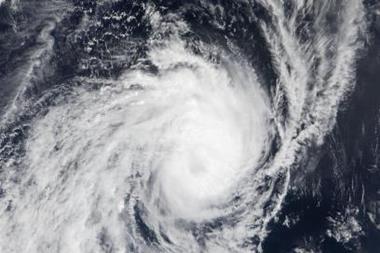There is significant value for the public sector to shift from a disaster relief approach – looking for financial support after an event – to one which includes the accumulation of funds and the spreading of risks before a loss occurs. By Reto Schnarwiler
The impact of natural catastrophes such as earthquakes, storms and floods on societies and economies has increased considerably in the last two decades and is likely to grow further as a result of two complementary trends. Firstly, the scale and frequency of major weather-related events are likely to rise due to climate change. Secondly, the economic impact of natural catastrophes is increasing due to the growing number of people living in areas with a high risk exposure, as well as more economic activity in these zones. Natural catastrophes typically affect individuals, companies, insurers and the public sector.
Apart from the loss of lives, they often result in major financial problems as assets are destroyed, while the liabilities – mortgages and loans – continue to exist. They also place a huge burden on the public sector, which has to shoulder not only relief efforts but also much of the rebuilding after an event. As a consequence, natural disasters typically hurt the budget of the affected city or country. Furthermore, public entities consciously take risks, for example when public infrastructure, such as power stations, hospitals, roads, bridges and schools, remains uninsured.
A variety of instruments can be considered in setting up a risk financing strategy. Most importantly, a public entity can act either before a disaster hits or afterwards. Pre-event risk financing measures include the building of financial reserves, contingent debt agreements, insurance and alternative risk transfer solutions. Post-disaster risk financing methods include budget reallocations, tax increases, use of domestic and international credit markets, loans from multilateral finance institutions, etc. Many developing countries also rely on the assistance of international aid agencies.
Pre-event finance
The financial and insurance markets can play a key role in preparing for the impact of extreme natural events, and there is significant value in shifting from the traditional disaster relief approach – financial support after the event – to an approach which includes the accumulation of funds before a loss occurs and the spreading of risks.
Pursuing a post-disaster financing strategy involves high opportunity costs. Funds must be diverted from priority development projects in order to pay for emergency and recovery needs. It can also be costly to raise new domestic debt in an expensive post-event capital market, which may, in turn, significantly raise a country’s debt servicing burden. Finally, raising taxes may discourage new private investments that are central to restarting the economy.
Financial risk transfer solutions
Risk avoidance and mitigation strategies must be the first priority in managing natural disasters, but while certain risks can be reduced or even avoided, no organisation or country can fully protect itself against extreme events. Transferring catastrophic risk should be a key element in the financial strategy of every disaster- prone country or region to enable and sustain growth, and the same applies for corporations and individuals.
This is where the insurance industry can offer its expertise to find innovative solutions. A new generation of sovereign insurance (or macro-insurance) instruments can make it easier for a municipality or country to cope with a disaster (see case studies on the next page). In parallel, innovative micro-insurance solutions can protect previously uninsured individuals and small enterprises from the disastrous financial consequences of natural catastrophes.
Such products can help governments and residents in a number of ways, including:
• Protecting and smoothing their budgets with potentially positive implications on debt levels, sovereign ratings, foreign exchange fluctuations, etc after an event
• Ensuring that funds are in place to compensate victims of catastrophic events, particularly in developing countries or in less developed areas of developed countries
Big risks are best placed on many shoulders
The larger and more complex a natural catastrophe, the more players are needed to share the risk. In case of a small event, an individual or company may bear the (full) costs in form of a deductible, but it takes many more players to absorb large natural catastrophes. Here, risks need to be shared between policyholders (individuals and/or companies), the domestic insurance industry and the global reinsurance industry and capital markets.
Different partners bring different strengths and play different roles. In developed countries with a functioning insurance market, there is less need for the government to absorb risk actively. Here, the role of the government consists of market enabling and potentially widening the boundaries of insurability. In less developed countries, the government often needs to play a more active role as a risk taker, as the insurance market cannot absorb the risks (yet).
As complexities and costs rise, single organisations can no longer meet the challenge alone. This is particularly true for developing countries which, besides having fewer financial resources, also bear the brunt of global warming.
To be better prepared for disasters and to adapt to the consequences of climate change, new forms of partnership between the public and the private sector are needed:
The public sector has the power to set framework conditions that facilitate adaptive responses by individuals, the public and the private sectors, but it typically operates under significant financial constraints. As costs rise, the capability of governments to meet this challenge will be stretched even further.
The private sector has the resources – approximately 86% of global investments are made by corporations and individuals – but not the power to set the appropriate frameworks. Furthermore, insurance and reinsurance companies have accumulated valuable knowledge and experience in dealing with catastrophes. Finally, companies like Swiss Re have the global diversification which is required to absorb these risks in a cost-efficient way.
The advantages of private-public risk transfer partnerships are obvious: They can help governments absorb catastrophes and stabilize their finances after an event. They also allow them to participate in global portfolios, reducing the costs of these risks due to the benefit from diversification. Furthermore, they enable public entities to tap the vast experience of insurance and reinsurance companies. In future, we expect to see more public private partnerships to manage the financial consequences of natural disasters.
SELECTED CASE STUDIES OF RISK TRANSFER SOLUTIONS
In December 2007, Swiss Re placed the first ever cat bond linked to Central American earthquakes. This instrument will make $25m coverage available in case of a severe earthquake in Guatemala or El Salvador. The trigger is the first of its kind in that the index is based on the population exposed to certain levels of ground-shaking intensity as measured by the Modified Mercalli Intensity scale. The goal of the GlobeCat securitisation is to create a platform and a model by which charitable foundations, governmental relief organisations and corporations can leverage donations or governmental or international funding to the benefit of developing nations affected by natural disasters. Such a programme will help these organisations become more proactive in planning and anticipating relief needs in areas of the world affected by severe catastrophes. In case of a triggering event, the funds will be quickly available for relief efforts rather than having to be raised after the event. The GlobeCat securitisation has shown that this concept is viable and that donation to coverage leverage can be as high as 45 times, meaning that $1 million of donations can be used for $45 million in relief. Other triggers are being developed for a wide variety of disasters.
Mexico earthquake
In 2006, we structured a parametric earthquake solution for the Mexican government. Mexico is highly exposed to various natural catastrophes. The country’s low insurance penetration relative to global averages means that most economic losses are uninsured, placing a large burden on the government.
In 1996, after an earthquake struck Mexico City, the Mexican government created a natural catastrophe fund called FONDEN with the aim of providing financial relief after natural disasters.
However, FONDEN is funded by fiscal resources which are limited and usually insufficient to fully finance non-insured losses caused by natural catastrophes.
This motivated the Mexican government to explore alternative financing methods for deploying emergency relief efforts and providing coverage for large geographical areas with the highest exposure to physical damage from catastrophes. In May 2006, the first parametric solution purchased by a government, in this case through FONDEN, was launched. The government is indemnified in the event of an earthquake the scale of which exceeds a certain threshold, defined by magnitude, depth and location. Three events of $150 million each are covered within a three-year period. Of the total amount, $160 million was placed in the capital markets through a parametric cat bond and the remainder was reinsured.
This Mexican cat bond illustrates how governments can directly transfer peak risks to capital markets to finance post-disaster reconstruction. This offers an option to governments to efficiently use public and private channels to increase the financial funds available after a catastrophe, rather than simply relying on taxes or foreign aid. The Mexican government is aware that this is only the first step towards a more adequate catastrophe risk management regime and is analysing similar solutions for other catastrophic exposures, such as hurricanes.
Source: GlobeCat Ltd.
Postscript
Reto Schnarwiler is head of public sector business development for Swiss Re. reto_schnarwiler@swissre.com
www.swissre.com



















No comments yet